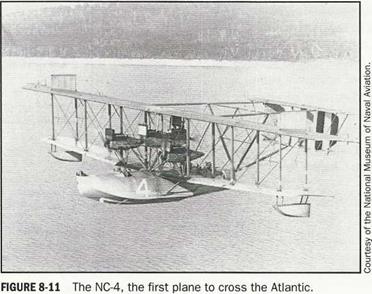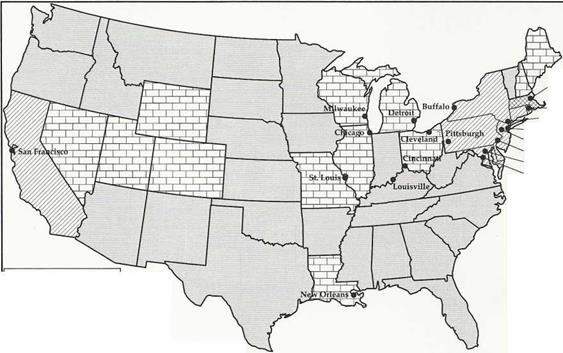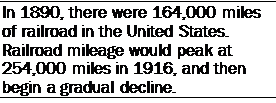War II
s the world approached the end of the third decade of the 20th century, the United States had overcome its disadvantaged position of being the last in the world of aviation to gradually becoming the first. The advances made in engine development during the 1920s by Pratt & Whitney with the Wasp and Hornet radials and by Curtiss-Wright (formerly Wright Aeronautical) with the Cyclone radial established those companies as the industry leaders. Airframe manufacturers during the 1930s had also gone through a “monoplane revolution,” which had completely transformed the design and manufacture of commercial aircraft from the biplanes of earlier years.
The 1930s had proved to be a turbulent period, dominated by the economic “Great Depression.” The promise of airline development springing from government-subsidized airmail had been sacrificed on the altar of politics when the Roosevelt Administration took office, and the airlines were having an exceedingly hard time making ends meet under the rate cuts mandated by the Black-McKellar Airmail Act of 1934.
The state of the art in airplane design and manufacture had evolved in the United States during this time, and it was represented first by the Boeing 247 and then by the Douglas aircraft
(DC-1 and DC-2) that evolved into the DC-3 design. Yet, in 1938 there was not much market for airline transports. That year only 42 civilian aircraft were built of any type designed to carry five or more passengers.
The military forces were a little better off in airplane numbers, but many were obsolete, and several hundred of the Navy’s aircraft were biplanes. Japan had been building militarily both in its air arm and its navy since the 1920s. Beginning in the middle of the decade, Germany began designing and then producing superior military aircraft. America was in a lethargic phase, separated from Asia and Europe by two great oceans and not vulnerable to air attack, but trouble was brewing.
About the time the Civil Aeronautics Act was passed, with war clouds on the horizon, Congress authorized funds for upgrading the Navy, but mostly for ships, not carrier planes. The Army received little funding, and none for bomber aircraft.
S War Beyond the Great Oceans
Japan was on the march in Asia in the late 1930s. It had militarily occupied Korea, Manchuria, and parts of China and appeared to have designs
on Southeast Asia and the Philippines for their rubber resources. In Europe, after concluding a non-aggression pact with the Soviet Union, Hitler invaded Poland to start World War II in September 1939. Japan, Germany, and Italy aligned to form the “Axis Powers.” Britain and France declared war on Germany. In 1940, Germany overran most of Europe north of the Alps, including France, the Low Countries, and Norway. The Soviet Union invaded Finland. Italy controlled Sicily, several other Mediterranean Islands and, along with Germany, several countries in North Africa. Italy attacked Greece, but had to be backed up by Germany in 1941, which also took Yugoslavia and then Albania. Germany invaded Russia in 1941 for oil resources in the Southern Russia and Caucasus region and for “Lebens – raum” in the Ukraine.
Great Britain stood alone as the last democracy against Fascist aggression in Europe. Many people believed an accommodation with Hitler was unavoidable, including some senior British Ministers in government. Appeasement and avoidance of war characterized the policies of Prime Minister Neville Chamberlain and Foreign Secretary Lord Halifax. When the Chamberlain government fell in May 1940, Sir Winston Churchill, whose mother was an American, became Prime Minister and he set an entirely different tone.
Three days after taking office, with expectations of an imminent German invasion of England, he expressed his resolve against Hitler in a speech to the House of Commons, saying “I have nothing to offer but blood, toil, tears, and sweat.” On June 4, 1940 he gave his famous “We shall fight them on the beaches” speech in the House of Commons, adding “we shall fight on the landing grounds, we shall fight in the fields and in the streets, we shall fight in the hills; we shall never surrender.” As the aerial war over England progressed between the Royal Air Force and the Luftwaffe during the summer of 1940, which was a prelude to Hitler’s plan to invade the island nation (Operation Sea Lion), he gave his third stirring speech, a tribute to the RAF and its brave pilots, saying: “Never in the field of human conflict was so much owed by so many to so few.”
In spite of all this, sentiment in the United States was mostly isolationist. After all, the peoples of Europe had been engaged in mutual combat from time immemorial, and the carnage of World War I was still fresh in the minds of most adult citizens. Neutrality Acts were passed by Congress to prevent the United States from “taking sides” in the growing hostilities worldwide. These Acts prohibited American vessels from transporting passengers or articles to the belligerents. There were even those who held up the recent industrial advances and full employment of the German nation as something to be admired. Charles Lindbergh was a prominent and active isolationist, frequently taking the stump to caution against “foreign entanglements.” In the 1940 election, Roosevelt had promised America’s mothers that he “would not send American boys to fight in any foreign wars.”
Yet, England and the United States were historically closely bound together—by language, by culture, and by common law. A secret correspondence had begun in September 1939 between Roosevelt and Churchill, even though Chamberlain was then still Prime Minister, centering on details of the coming war that had been precipitated by the German invasion of Poland only days earlier. There was a kind of kindred spirit between Roosevelt and Churchill—both had in their earlier years been identified with their countries’ navies, Roosevelt as Assistant Secretary of the Navy in the Wilson Administration and Churchill as First Lord of the Admiralty before and during the First World War, a position he again held in the run up to World War II. This personal correspondence provided a “back door” channel between the two countries that served to allow the United States an inside look at the dire situation England would find itself in after the fall of France the next year. And it gave
Churchill a direct line to the United States to plead for help.
The Royal Navy was fighting for its life against German U-boats, which were sinking prodigious amounts of tonnage, and the new battleships Bismarck and Tirpitz were prowling the North Atlantic sea lanes. In the summer of 1940 the aerial “Battle of Britain” was a touch and go affair with daily bombing raids on London and other English cities and on Royal Air Force airbases. Although the Office of Home Defense had developed a primitive form of radar that enabled the RAF to anticipate the approach of Fuftwaffe planes, the resulting daily aerial dogfights were depleting the fighter capability of the RAF, and new aircraft production in England could not keep up with the losses being sustained. The same situation existed with naval transport vessels and warships. The HMS Hood, pride of the Royal Navy, was sunk in May 1941 by the Bismarck.
There was little doubt that Roosevelt believed that the future of Western Civilization depended on preserving the British nation and defeating Nazi and Japanese aggression. Roosevelt’s public persona reflected the isolationist sentiment of the country, and he was legally bound by the law of the land, which required strict neutrality. But the 1937 Neutrality Act contained a loophole that allowed the president to authorize the sale of materiel to belligerents in Europe as long as they paid for the goods in cash and arranged for their transport, which provided a little daylight to the Roosevelt Administration to quietly begin to help England.















 The pendulum had swung too far in the early and energetic days of railroading, and the government was now catching up to balance things out in the public interest. The days of unbridled capitalism in the railroad business were over. In the early years of the 20th century, the railroads were nearing what was to be their maximum trackage (miles of laid tracks), and they were just about to experience the effects of continuing industrial and technological development (Figure 3-4 displays the emergence of U. S. cities in 1880) that would lead to alternative forms of transportation that would overpower them. The days of the internal combustion engine, the open road, and the machines of the air lay just over the horizon.
The pendulum had swung too far in the early and energetic days of railroading, and the government was now catching up to balance things out in the public interest. The days of unbridled capitalism in the railroad business were over. In the early years of the 20th century, the railroads were nearing what was to be their maximum trackage (miles of laid tracks), and they were just about to experience the effects of continuing industrial and technological development (Figure 3-4 displays the emergence of U. S. cities in 1880) that would lead to alternative forms of transportation that would overpower them. The days of the internal combustion engine, the open road, and the machines of the air lay just over the horizon.